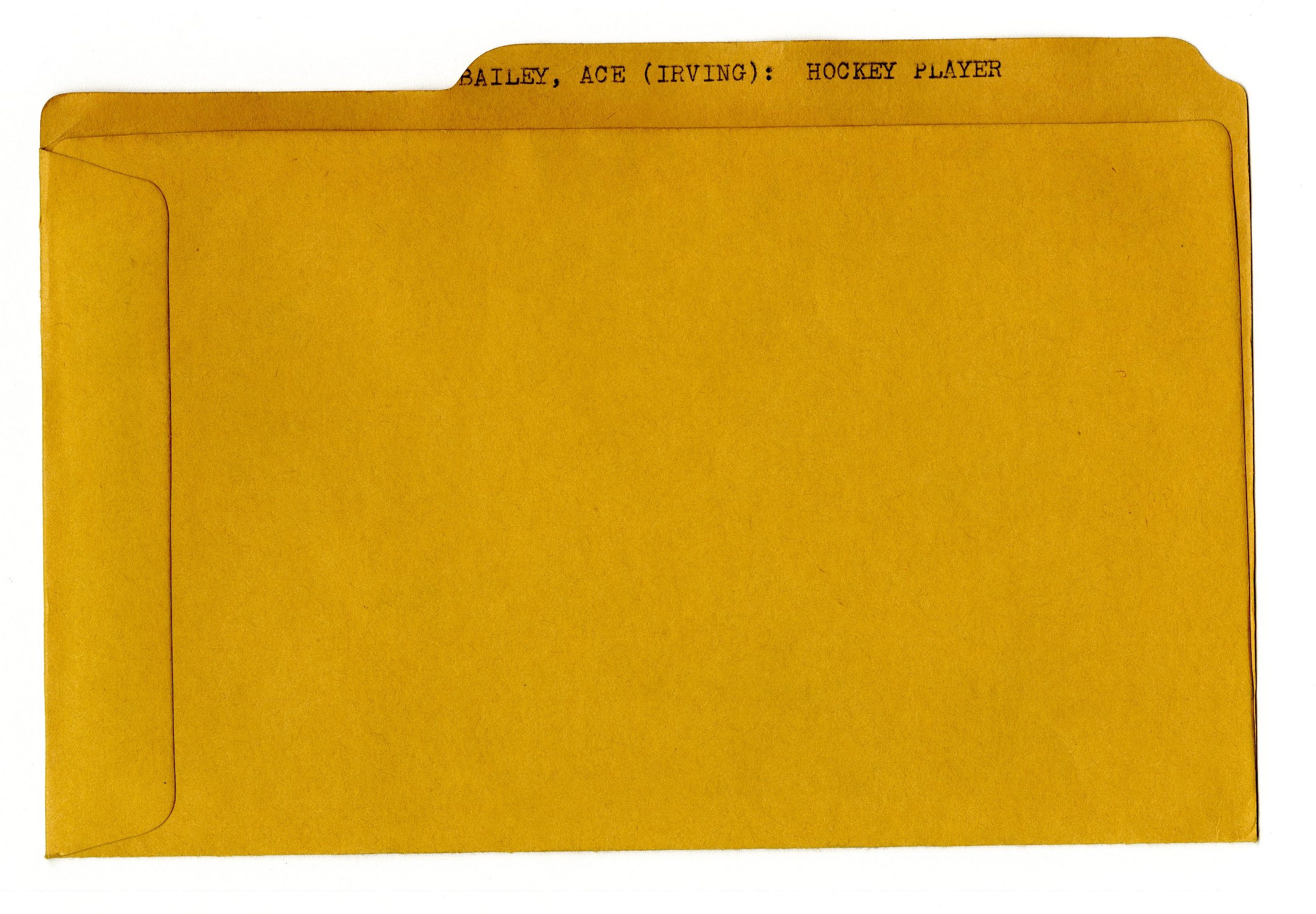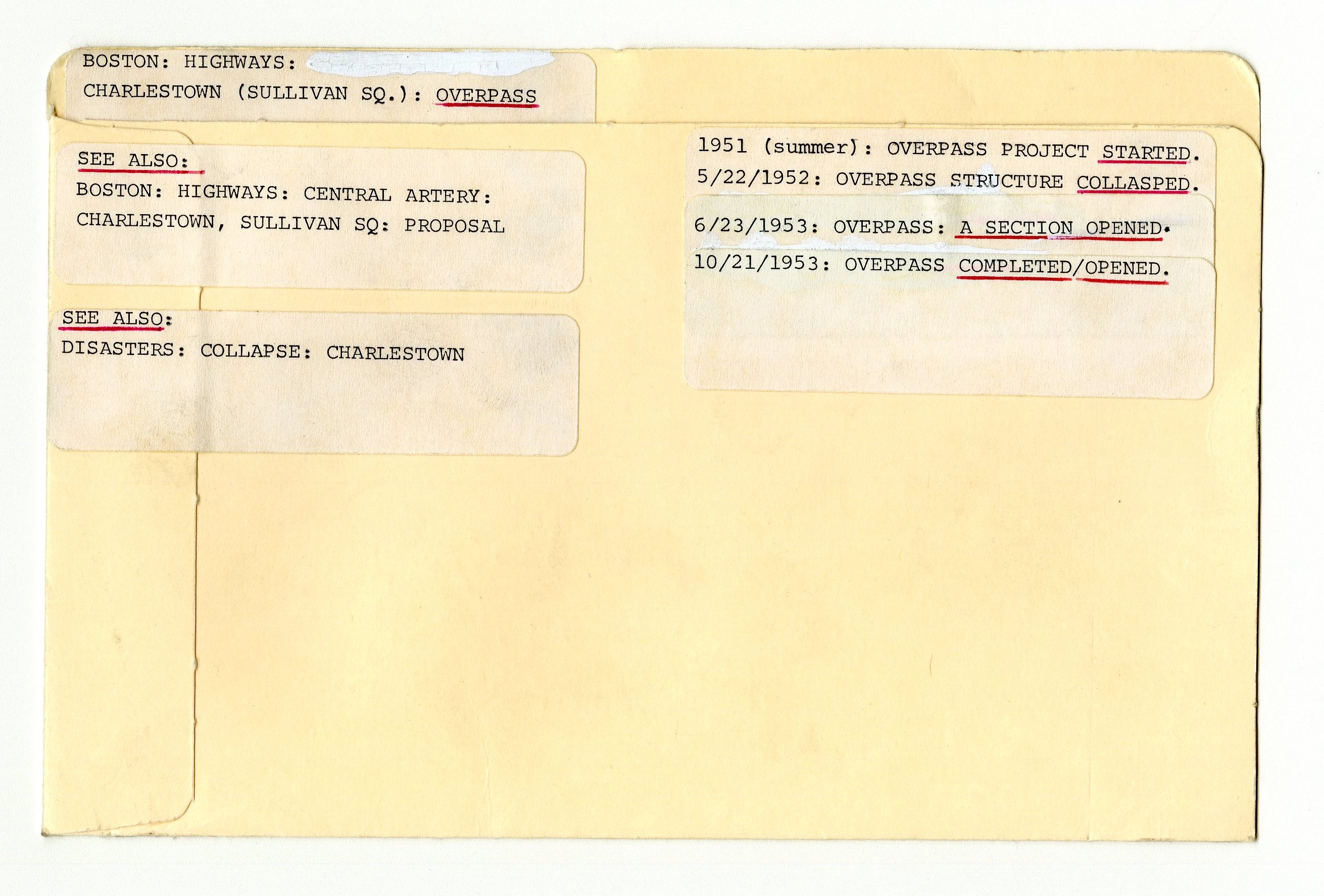Newspaper Clippings
Anatomy of a Newspaper Clipping File
 People Files are organized alphabetically by last name and typically include other identifying information. Identifying information can include a location (e.g., Lowell, MA) or nationality, an occupation, or other reason for being noteworthy, such as being a victim or perpetrator of a crime. Along with newspaper clippings about the individual, files may include photographs, microfiche sheets of clippings, or other kinds of contextualizing information.
People Files are organized alphabetically by last name and typically include other identifying information. Identifying information can include a location (e.g., Lowell, MA) or nationality, an occupation, or other reason for being noteworthy, such as being a victim or perpetrator of a crime. Along with newspaper clippings about the individual, files may include photographs, microfiche sheets of clippings, or other kinds of contextualizing information.
 The Boston and Massachusetts Subject Files are also arranged alphabetically, with varying levels of granularity for different subjects. In the example on the left, the file for the Charlestown Overpass is filed under “Boston,” then “Highways,” then “Charlestown, Sullivan Sq,” then “Overpass.” Along with newspaper clippings, files may include microfiche, pamphlets, government documents, and other contextualizing information. Files may also be arranged chronologically by year, notably those related to elections and events that took place over longer periods of time, such as the files on the desegregation of Boston Public Schools and anti-Vietnam War demonstrations.
The Boston and Massachusetts Subject Files are also arranged alphabetically, with varying levels of granularity for different subjects. In the example on the left, the file for the Charlestown Overpass is filed under “Boston,” then “Highways,” then “Charlestown, Sullivan Sq,” then “Overpass.” Along with newspaper clippings, files may include microfiche, pamphlets, government documents, and other contextualizing information. Files may also be arranged chronologically by year, notably those related to elections and events that took place over longer periods of time, such as the files on the desegregation of Boston Public Schools and anti-Vietnam War demonstrations.
Identifying and Requesting Boxes to View
The newspaper clippings series are only available in print and are stored offsite. To view these materials in person, please contact Archives staff to request relevant boxes and arrange a visit. Please keep in mind that a request to transfer a box from offsite typically takes up to two business days.
Unsure which boxes you’d like to request for your research? Archives staff can help you identify which boxes you may wish to look at. Asking for help from the staff may be the most direct and time-saving approach, but the following instructions are provided for those curious about how the staff make educated guesses about the appropriate ranges of people or subjects a box covers and how they identify its identification number to complete an order.
1. Starting at the Finding Aid, locate the drop-down menu on the right of the page that outlines the organization of the collection. Within the series, select Series 1. Newspaper Clippings, which will reveal the five sub-series: Byline, Boston, Massachusetts, People, Obituary Advance Research, and People.
2. Depending on your research topic, use the drop-down menu to browse the sub-series. As files are arranged alphabetically, you can scroll down to find the correct range your person or subject of interest would be situated.
3. Selecting one of the ranges will take you to a new page within the Finding Aid. The selected range will appear at the top left of the page followed by a nine- or ten-digit box number. This is the identification number for the box that Archives staff will use to request it from offsite storage. (Note: In some cases where one individual’s files span multiple boxes, the identification numbers will be located under “Physical Description” at the bottom of the page instead.)
4. Contact the Archives either by phone or email to request the boxes and arrange a visit.
To contact Northeastern’s Archives and Special Collections, email us at archives@northeastern.edu or call during business hours (M-F, 8:30am-5pm) at (617) 373-2351.
